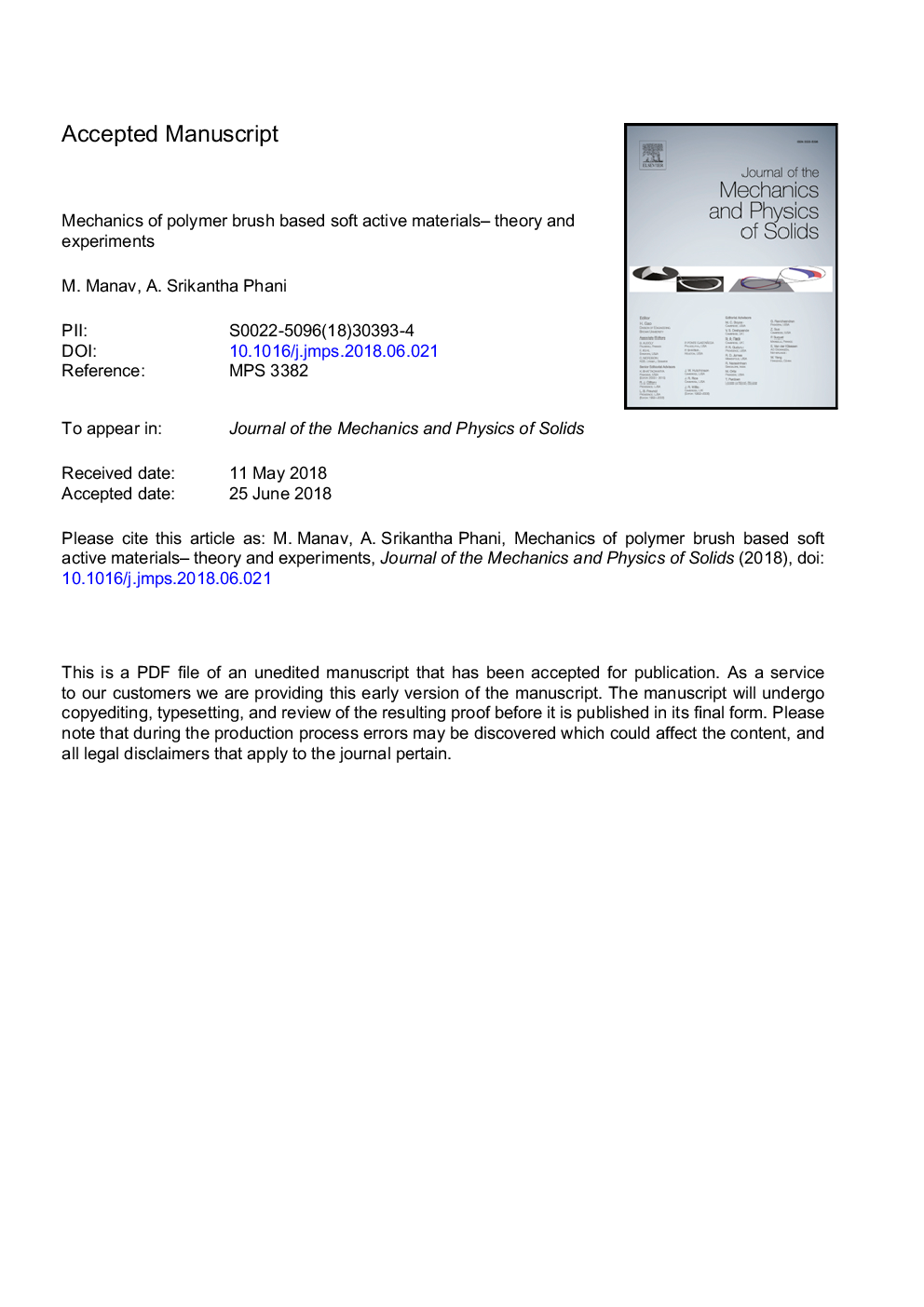| Article ID | Journal | Published Year | Pages | File Type |
|---|---|---|---|---|
| 11004042 | Journal of the Mechanics and Physics of Solids | 2018 | 45 Pages |
Abstract
A brush-like structure emerges from stretching of long polymer chains, densely grafted on to the surface of an impermeable substrate. The structure arises due to the competition between conformational entropic elasticity of polymer chains and excluded volume interactions leading to intra and interchain monomer repulsions. Recently, soft materials based on stimuli responsive polymer brushes have been developed to produce controllable and reversible large bending deformation of the host substrates. To understand such systems and improve their functional properties, we study the stress distribution in a brush, and develop surface stress-curvature relation for an elastic beam of a soft material grafted with a neutral polymer brush. In the strongly stretched brush regime, we combine mean field theory from polymer physics with a continuum mechanics model and show that the residual stress variation in a brush is a quartic function of distance from the grafting surface, with a maximum occurring at the grafting surface. By idealizing a brush as a continuum elastic surface layer with residual stress, we derive a closed form expression for surface stress and surface elasticity of the layer as a function of brush parameters, such as graft density and molecular weight. A generalized continuum beam model accounts for the Young-Laplace and Steigmann-Ogden curvature elasticity correction terms, and yields a surface stress-curvature relation, that contains existing relations in the literature as special cases. Further, we report experiments on a thermoresponsive random copolymer brush, Poly(N- isopropylacrylamide)-co-Poly(N,N-Dimethylacrylamide) (PNIPAm-co-PDMA) brush, grafted on one side of a plasticized poly(vinyl chloride) (pPVC) thin film. Estimated surface stress from measured curvature is on the order of â10N/m, and its magnitude decreases gradually, and reversibly, on increasing ambient temperature from 15â°C to 55â°C.
Related Topics
Physical Sciences and Engineering
Engineering
Mechanical Engineering
Authors
M. Manav, P. Anilkumar, A. Srikantha Phani,
